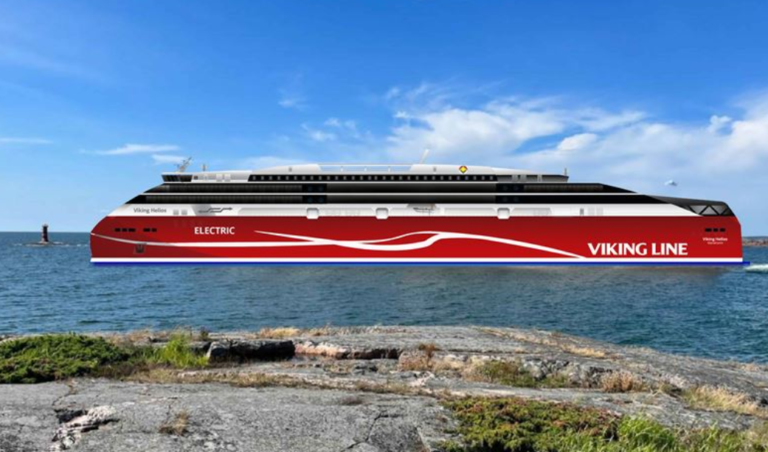Finland-based Viking Line to Launch Emission-Free Route with World’s Biggest Electric Passenger Ferry
Finland-based shipping company Viking Line is set to revolutionize the maritime industry with the launch of an emission-free route between Helsinki and Tallinn, Estonia. This groundbreaking route will be serviced by what is hailed as “the world’s biggest” all-electric passenger car ferry.
The ambitious project involves the construction of the ferry named Helios, for which Viking Line has submitted a funding application to the EU’s Innovation Fund. The vessel is expected to start operations in the Gulf of Finland by the 2030s.
Collaborating with shipbuilder Rauma Marine Constructions and other partners, Viking Line’s team developed the concept of the all-electric ferry. The vessel will boast a battery capacity of around 85-100 megawatt hours (MWh) and have the ability to transport up to 2,000 passengers across the Gulf in just over two hours. With a length of 195 meters and a width of 30 meters, the ferry is projected to achieve a speed of approximately 23 knots.
Viking Line disclosed that the ferry will require a charging capacity of over 30 MWh to operate efficiently. CEO Jan Hanses expressed enthusiasm for the project, highlighting the opportunity to establish a green maritime corridor between Helsinki and Tallinn, benefiting both ports.
“Electric shipping is not created solely by ship investments. It also requires efficient, reliable charging infrastructure in ports. The home port for the new electric vessels would be Jätkäsaari, where the Port of Helsinki has a development and expansion program underway until 2032. The progress of this project is extremely important for our own plans,” Hanses explained.
The emission-free shipping initiative in the Gulf of Finland is supported by the FIN-EST Green Corridor project, which involves various stakeholders including the cities of Helsinki and Tallinn, the ports, Estonia’s Ministry of Climate, and shipping companies like Viking Line and Tallink Grupp.
As part of the FIN-EST Green Corridor project, 19 joint initiatives were approved in October 2024 to promote climate neutrality in the region, marking a significant step towards sustainable transportation.
Commitment to Sustainable Shipping
Viking Line has been proactive in its efforts towards low-emission shipping and achieving Net Zero targets. The company has invested significantly in new technologies, with a focus on reducing greenhouse gas emissions and promoting sustainability.
In 2013, Viking Line introduced the world’s first passenger vessel, Viking Grace, to use liquefied natural gas (LNG) and biogas as fuel. Subsequent initiatives included trial testing of rotor sail technology onboard Viking Grace and the addition of the LNG-powered Viking Glory to the fleet in 2022.
Furthermore, Viking Line has embraced biofuel as an alternative to traditional fossil fuels. The company unveiled a biofuel-based sustainable initiative in January 2025 to reduce greenhouse gas emissions from conference trips on its Helsinki routes.
With its commitment to environmentally friendly practices and innovative technologies, Viking Line continues to lead the way in sustainable shipping, setting a new standard for the industry.

